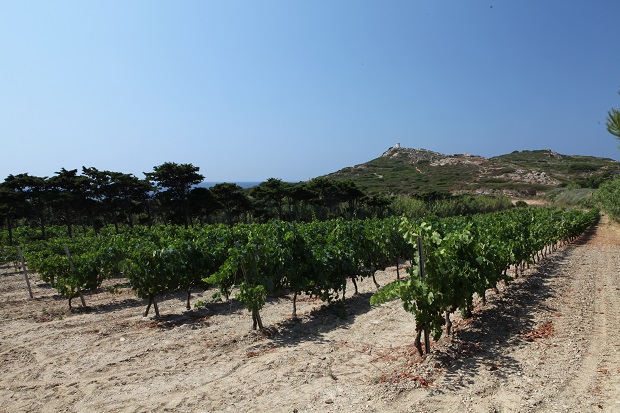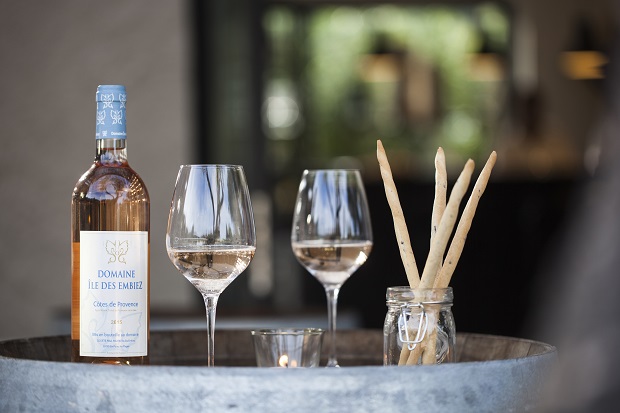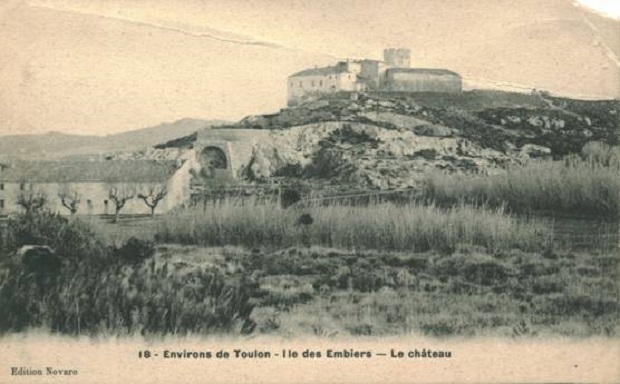
The name “Embiez” comes from the Latin word “ambo” which means both. This is explained by the archipelago of the two islands: Ile des Embiez and île de la Tour Fondue. The name changed spelling numerous times as time passed: Embers, Ambias, Embiers, Ambies, Ambiers, and finally Embiez.
The oldest ruins found on the island which are proof of human presence date back to the 5th century BC, probably left by fishermen of navigators. It is true that the Iles des Embiez has been the refuge of sea lovers and professionals. It also withstood pirate invasions.
Starting from 1068, monks from the Saint Victor Abbey started to exploit the salt marshes on the island, which then ran from the Coucousa tip to the Tour Fondue tip. At the time, salt was an expensive and precious delicacy, primordial to conserve food. It even had the nickname of “white gold”. To collect to salt, they built low walls made out of dry stone and crystallization pans in shallow waters. This was also when the apartments “Les Douanes” were built and named in remembrance of this part of the island’s history (today they have been renovated in 8 premium accommodations of the Hôtel Hélios.) The salt was then taxed by the state, the “gabelle” and it was in these apartments that in was collected, by the “gabelous”.

Following that, the island was acquired by the LOMBARD family in 1520, a local from Six Fours. Bathélémy LOMBARD took over the busyness of the salt marshes and received the request from Henry 4th that his domain be transformed as an « arrière-fief »: his family was able thanks to this occasion, obtain the title of “Saint Cécile”. This is where the name of the chapel which is on the island nowadays comes from. The LOMBARD family was also the one who planted all the grapevines between 1580-1600. They then began the construction of a castle in 1602, which is today private property of the RICARD family.
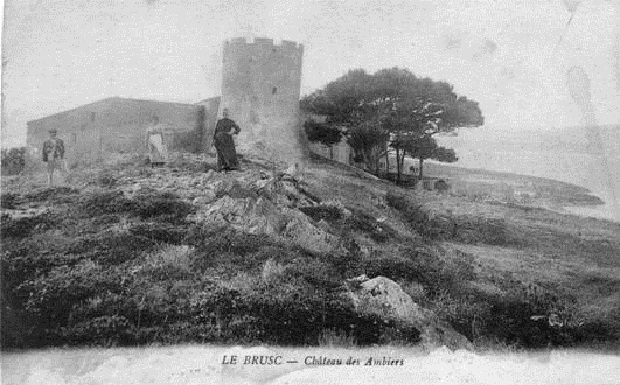
After that, in 1862 began the construction of the Saint Pierre fort. A plaque is still there to this day, at the entrance, which commemorates the date on which the construction ended: in 1867. The Fort nowadays is home to the aquarium and museum of the Institut Oeanographique Paul Ricard (founded by Paul Ricard in 1966 but named so in 1991).
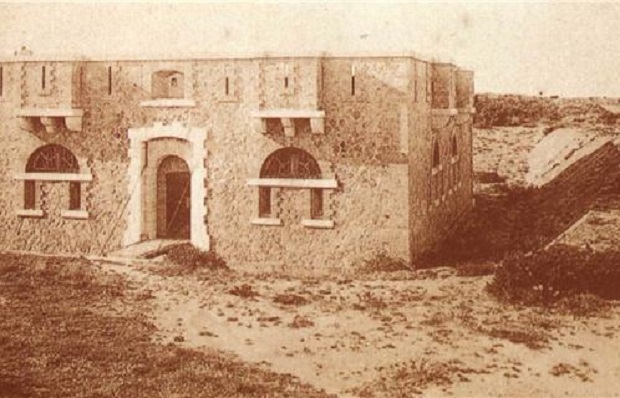
After multiple successions, the island was bought back by Michel SABRAN (famous Provencal family) in 1720. During the French Revolution, in 1789, the island is declared as “national property”.
The beginning of the 19th century was a darker era for the island, due to being used for sodium sulfate production (also known as sulfate of soda). Sea salt was decomposed with sulfuric acid to produce sodium sulfate, but this procedure caused hydrochloric acid waste which needed to be meticulously cleared because of their toxicity. The Sodium sulfate was then processed with coal and chalk in order to obtain precious sodium carbonate (used to produce soap in Marseille).
Unfortunately, after changing ownership three years later, hydrochloric acid clearage wasn’t executed correctly anymore and damaged the surrounding vegetation and health of the people close by. The sodium sulfate production factory was therefore shut down in June 1847.
The island eventually changed ownership many times, each exploiting the three and a half hectares of salt marshes up until it couldn’t compete anymore against other marshes such as the ones in Aigues-Mortes or in Salin-de-Giraud. As the maintenance and management of this small area became less and less profitable, the salt production on the Ile des Embiez ended in 1938.
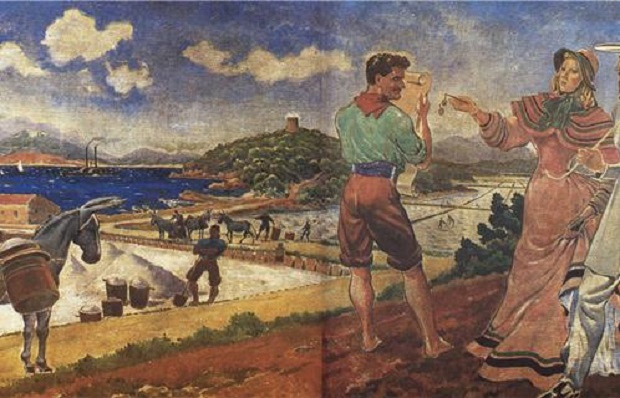
From that point on, the Ile des Embiez became a haven for diving enthusiasts such as Frédéric Dumas, Phillipe Tailliez and Jacques-Yves Cousteau (“Les 3 Mousquemer”). Together, they created the first French underwater movie in 1942 on Les Embiez “Par Dix-huit mètres de fond”.
PAUL RICARD:
When Paul Ricard buys Les Embiez in 1958, he is confident about finding what nature has best to offer in order to dream and escape from your everyday life. The only things remaining on this island are an abandoned fort and a tower in ruins, on top of which many generations of lookouts have watched out for pirates… His only wish it to preserve this natural paradise and to transform it into a destination for all who wish “to unwind and to find themselves, far from crowds and pollution of the mainland.”* Onwards from the 60s, Paul Ricard, as a visionary, already perceives the “leisure civilization” as something obvious. He wants to turn the island into “a high ranked international touristic area, an ideal stay to lay back and for vacation, with everything necessary to be happy: silence, relaxation, absence of car traffic, the joys of the sea, strolls on bike or by foot (…)”*. His intentions are clear: “We will convert this island in order to fulfill the happiness of Mankind. We will build on it with art and love, we will plant on it trees, grow flowers, erect statues…”*.
In 1960, Paul Ricard begins the construction of the harbour of Les Embiez, literally enclaved in the north of the island (where the salt marshes used to be), in order for it to be able to shelter boats regardless of the meteorological conditions. It was opened in 1963 and expanded to the east in the 70s (between the pine forest of Le Canoubié and the Pétanque grounds). Accessible by all weather conditions, it now has 750 rings and up to 150 places are available for stopovers.
The vineyards: exploited since 1922, they produced a renowned wine among locals which was carried in barrels to the shore. They were then abandoned during World War 2 and then restored in 1947, and now by the employees of Les Embiez. Nowadays, Les Embiez has almost 11 hectares spread across 29 parcels and produces 3 colors of wine: red wine, white wine, and rosé as I.G.P. Var and rosé as A.O.P. Côte de Provence as well. It is the only domain of Six-Fours-Les-Plages, and the whole process is realized on the island from start to finish.
The wine is on sale all year round in the harbour master’s office of Les Embiez’s harbour and at the island’s cellar every weekend on high season, as well as every day (except for Thursdays) in July/August.

Still, to this day, the Ile des Embiez is as Paul Ricard wanted it to be, and wears the brand of a man who fought for the well-being of mankind, preserve the sea and protect nature since the 60s.
*Pulled from the book “La passion de créer” written by Monsieur Paul Ricard
